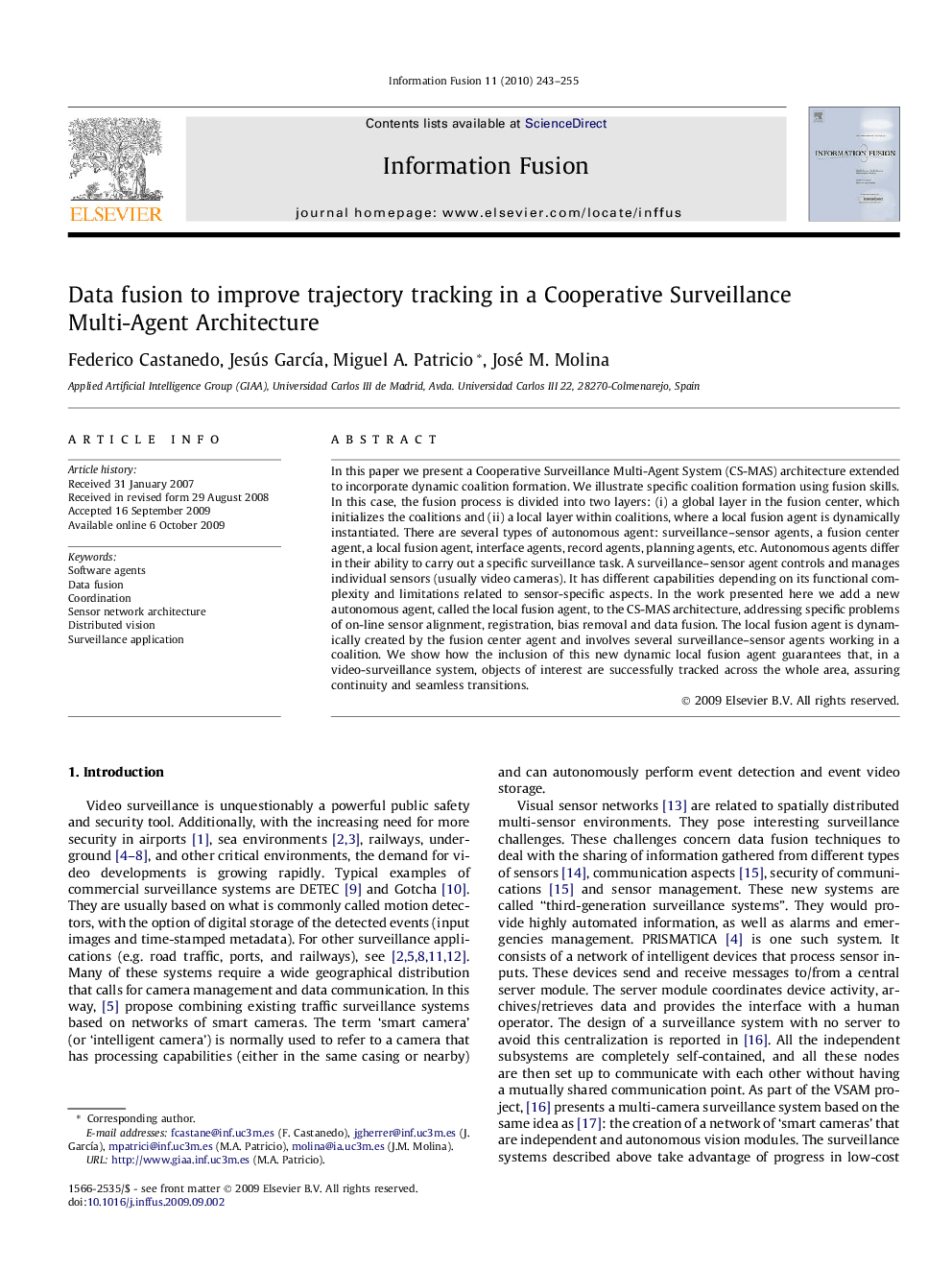| Article ID | Journal | Published Year | Pages | File Type |
|---|---|---|---|---|
| 528869 | Information Fusion | 2010 | 13 Pages |
In this paper we present a Cooperative Surveillance Multi-Agent System (CS-MAS) architecture extended to incorporate dynamic coalition formation. We illustrate specific coalition formation using fusion skills. In this case, the fusion process is divided into two layers: (i) a global layer in the fusion center, which initializes the coalitions and (ii) a local layer within coalitions, where a local fusion agent is dynamically instantiated. There are several types of autonomous agent: surveillance–sensor agents, a fusion center agent, a local fusion agent, interface agents, record agents, planning agents, etc. Autonomous agents differ in their ability to carry out a specific surveillance task. A surveillance–sensor agent controls and manages individual sensors (usually video cameras). It has different capabilities depending on its functional complexity and limitations related to sensor-specific aspects. In the work presented here we add a new autonomous agent, called the local fusion agent, to the CS-MAS architecture, addressing specific problems of on-line sensor alignment, registration, bias removal and data fusion. The local fusion agent is dynamically created by the fusion center agent and involves several surveillance–sensor agents working in a coalition. We show how the inclusion of this new dynamic local fusion agent guarantees that, in a video-surveillance system, objects of interest are successfully tracked across the whole area, assuring continuity and seamless transitions.
